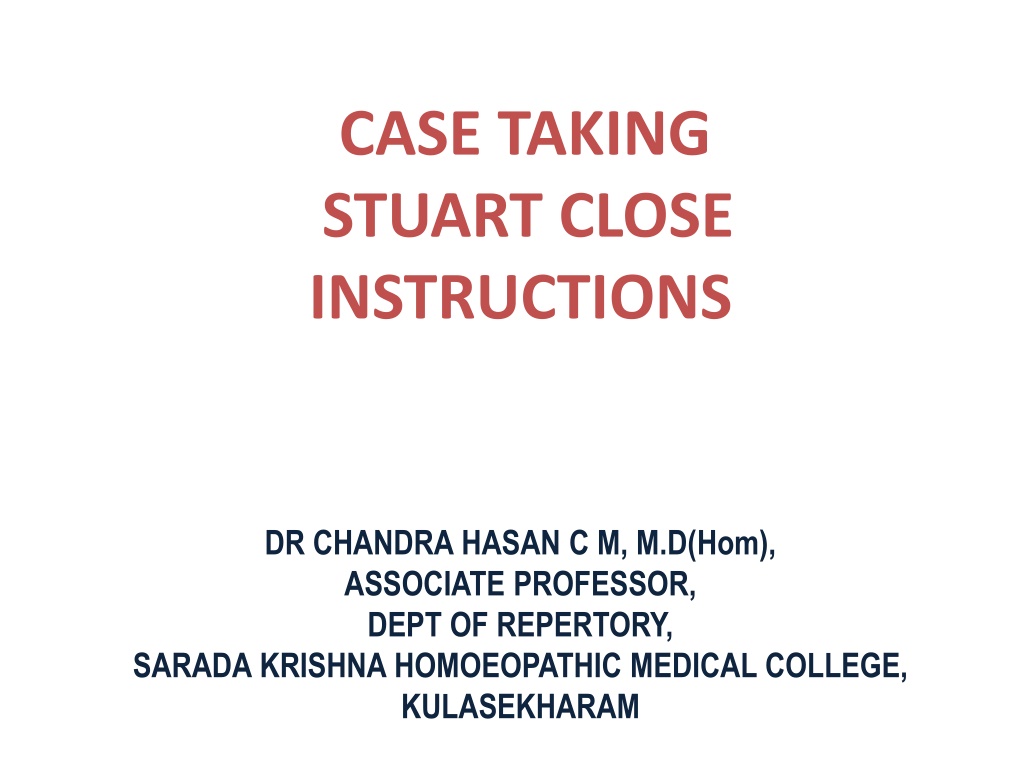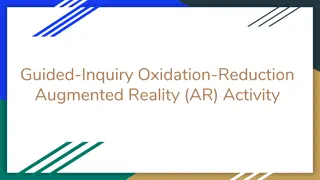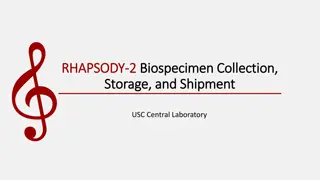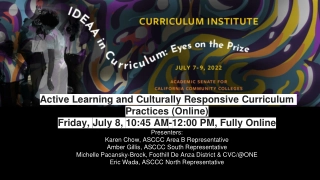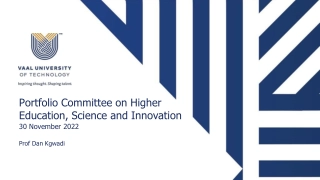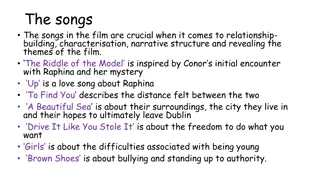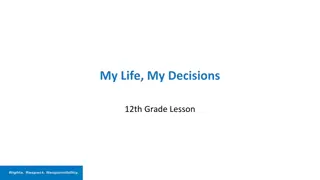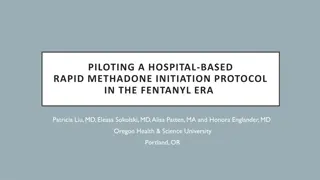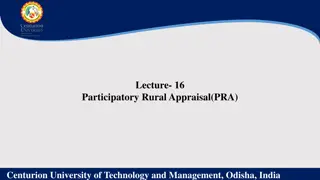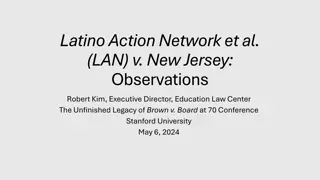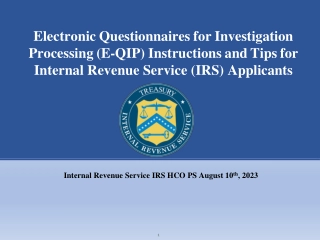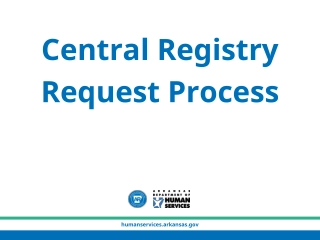CASE TAKING STUART CLOSE INSTRUCTIONS
The process of examining a patient for a homoeopathic prescription involves focusing on subjective experiences and symptoms perceived by the patient, rather than general diagnosis and pathology. By understanding the significance of individualized symptoms and modalities, a homoeopathic practitioner can effectively select the appropriate remedy. Utilizing specific examination techniques and establishing a rapport with the patient are essential for gathering valuable information for prescribing homoeopathic treatments.
Download Presentation
Please find below an Image/Link to download the presentation.
The content on the website is provided AS IS for your information and personal use only. It may not be sold, licensed, or shared on other websites without obtaining consent from the author. Download presentation by click this link. If you encounter any issues during the download, it is possible that the publisher has removed the file from their server.
Presentation Transcript
CASE TAKING STUART CLOSE INSTRUCTIONS DR CHANDRA HASAN C M, M.D(Hom), ASSOCIATE PROFESSOR, DEPT OF REPERTORY, SARADA KRISHNA HOMOEOPATHIC MEDICAL COLLEGE, KULASEKHARAM
It is evident that if the physician can intelligently and logically know the study method of examining patient for a homoeopathic prescription, and the physician know about what are the symptoms are useful for homoeopathic stand point, and able to decide some adequate form of classification. We shall be more successful in our search, for any thing we want to know, what we are looking for(what we decide to obtain) i.e., logical some total of symptoms. So in examining a patient, the student who know the nature(established order), constitution and variety of symptoms necessary for the homoeopathic prescription.
We never consider pathology and general diagnosis, because pathology and general diagnosis, didn t take in to consideration of phenomena (perceptible symptoms), individualized phenomena are most significant from the stand point of the homoeopathic prescriber. The modalities or characteristic conditions, which we have to see to be of the highest importance in selecting the homoeopathic remedy, as the same the mental and subjective symptoms. Thus we have to separate and classify the various kind of symptoms revealed by the complete general examination. And vary our examination method according to the particular end in view.
The techniques of examination of the patient for the purpose of diagnosticating the disease is quit different from that of patient for making homoeopathic prescription. The selection of the homoeopathic remedy is based very largely and some times almost entirely up on the phenomena drawn from the subjective conscious experience, perceived only by the patient and stated by him to the examiner. Nearly all the subjective phenomena possessing value from these stand point of homoeopathic therapeutics. We will get such symptoms from the patient by the patient s observing power.
The subjective morbid sensation and phenomena Which come with in the sphere of the patient s own experience and are perceptible him alone. The subjective signs of the disease which are perceptible to the natural sense of physician, the patient or others. For the subjective symptoms we must depend entirely up on the statement of the patient him self. In the special examination the physician should at once Endeavour (attempt) to put our selves up on such a footing (attachment) and in personal relation to the patient. It will best favor a full frank revelation (to make known ) by the patient all the circumstances and
conditions that have led up to him illness, and an equally full simple and frank statement of his sufferings as they seem to him. It is well in some cases, to briefly explain to a new patient, the special purpose of a Homoeopathic examination, and to point out how it differs from the ordinary examination, especially by including mental and subjective symptoms. The physician must gain the patients confidence relive him as for as possible from the sense of restraint (to hold back) and embarrassment (confuse). The patients confidence on physician is favored in general way, by calm, dignified (joy), but at the same time quiet (un disturbed) and sympathetic manner on the part of the examiner, a demeanor
(behave) confident, but not pompous (great show), simple and direct but not aggressive (being a quarrel) cheerful (entertinable or comfortable), but not flippant (disrespect full), serious, but not grave (destructive) or funerals (disposal). The physician or the examiner should try to put the patient at his ease by adapting our selves to his personality (state of being person) and mood (temporary state of mental attitude). We should not confuse the patient by a too penetrating gaze (fixed look) at some objective features which may attract our attention. We may learn to observe objective phenomena accurately with out seeming to do so (gaze fixedly
at that part). If a patient sees us gazing fixedly at some part of his anatomy, he is likely to become anxious and forget other matters which are of more important to us as a prescriber. In nervous patients it is best to adapt physical examinations using instruments at the end after the closure of the case taking or after he lost his nervousness (excitement). The patient should be encouraged to tell his story freely and relive his mind, in semi conversational manner. The best results from the homoeopathic stand point are obtained by making him forget that he is under examination.
He wants to feel and it is best for him to feel that he is relating his troubles to a sympathetic friend who has the resources at hand to help him. It is a good rule to keep the patient talking but say little your self during an examination to let him to tell the story in his own way with out interruption except to bring him back to the subject if digresses (depart from the subject). We may start him in his narrative by asking when and how his troubles began and we may instruct him to be a definite as possible in relating his history and in locating and describing his sensations as they seems to him, we should not laugh at him nor pedantically (like school master) correct his errors.
We should not ask leading questions nor put word in his mouth, but let him express his feelings and observations in his own way. After that we analyze, (i.e.).go through, complete, correct and interpret his statement in accordance (conformity) with the principles of Homoeopathic symptomatology. Notes of the patients statements should be made while he is talking, but quite, with out ostentation (draw attention). It is well to leave a space between the symptoms as they are written so that, when the patient has finished his voluntary statement, one can glance quickly back over the pages, see what has been left out and write in it.
Questions are then put in such a manner as to complete each symptoms as to location, sensation and modality and fill in the record. As a mater of convenience in writing and keeping records, it is well to divide the page in to three vertical columns, the first for date and remedy, the second for the symptoms third for modalities and conditions. This makes a page that the eye quickly takes in at s glance. We should not hurry a patient in his narrative, we may keep him to the point and prevent rambling and in consequential statements. It is well to keep in mind always, during the examination of a case, some working classification
of symptoms as general, particular and common. In examining a case we are gathering data, facts, particulars, from which we are later to determine the characteristic features of the case by logical process of generalizing. First the analysis facts from the patients statement then the nurses, relatives or friends statements, and then our observations. Then comes the synthesis, the review and study of the symptoms and construction of the case, classifying symptoms as we generalize. Comparison of the symptoms of the patient with the symptom of the materia medica, and repertory work follows, and finally the selection of the indicated remedy by the exclusion process (elimination).
The suggested classification of symptoms in to general, particular and common symptoms is applicable to difficult in chronic as well as acute cases. He says the following as Hahnemann s words The individualizing examination of a case of disease demand the physician nothing but freedom from prejudice, sound senses, attention in observing and fidelity in tracing the picture of the disease . The purpose of Homoeopathic examination is to bring at the symptoms of the patient in such a way as to permit of their comparison with the symptoms of materia medica, for the purpose of selecting the similar Homoeopathic remedy.
In order to get the facts many obstacles have to be over come. Among them modesty (assuming) often on the part of the patient, some times (rarely) on the part of the physician. Many of the patients statements will be mere generalities (common features). These are of no value to the prescriber until they have been analyzed in to their elements. In the beginning they are merely common symptoms with out individuality, (ex) patient says head ache generally, so it is the duty of the examiner must analyze and get the elements of locality, sensation, modalities by properly forming the questions.
Another (ex) the patient may state that he has a discharge of some kind. After locating that anatomically it should be analyzed in to it s elements of colour, odour, consistency, quality, quantity and staining, etc. Even though the facts must be gathered from the patient, their form, relations and value depends almost altogether up on the examiner. The patient unaided (mentally not sound) will usually give only rough, disconnected statements, crude generalities, single concrete facts and a few details, a mere frame less mass. The trained examiner patiently and skill fully analyze and complete the statements, bring out
details connects the whole and constructs the case logically and scientifically giving it a typical form, according to the preconceived idea about case taking and processing. Clinical history : Getting a good clinical history is one of the most important part of case taking. In order to deal intelligently with the present sickness, we must know some thing about the past sickness. We must know not only the facts of the pre sent, perhaps acute illness, but also know what led up to the present illness. This is because all genuine acute diseases are, in reality acute diseases or exacerbations of previously
latent (in visible), deep-seated, underlying chronic disease or inherited tendencies (hereditary), and predisposition to disease, which exist in practically all persons. As a rule at the appropriate time we first get complete list of the patients previous diseases, from child hood down to the present, in as nearly chronological order as possible, with the ages at which the attacks appeared and enquire their nature , symptoms, duration, severity, sequalae (after effects of diseases). We shall inquire carefully about acute eruptive infections, inflammatory or febrile diseases, including children s diseases, and more about chronic and
obscure ailments, including skin diseases, organ and glandular diseases, nervous diseases (related to brain and nerves), catarrh and discharges from any of the mucus outlets, bone and joint diseases, rachitis, all disorders of sexual sphere especially syphilis and gonorrhea. In women and girls inquire about the menses, age at which established, regularity of the periods, note all the deviations from the normal and ascertain the time and influence of marriage, child birth, etc. We should enquire weather the patient is vaccinated, when the patient has been vaccinated, and learn what course the implanted disease took. At the same time we should inquire of any other
inoculated with serum or vaccines have been performed. Many troubles may be traced back to vaccinations and inoculations, intentional or accidental. The kind of treatment the patient has had for the diseases experienced and the principle drugs used should be learned if possible. It is important to ascertain the patient has met with any accidents or mechanical injury or suffered from any mental shock or trial (emotional) such as grief, fright, anxiety, worry, business loss or reverses, un happy domestic experiences, disappointments in love, etc, and fix the date and sequence. Such
experiences have a power full influence in causing or pre disposing to diseases, and some times used as guiding symptoms. It is important to ascertain the family history, that brief history of diseases, cause of death, predisposition and tendencies to disease and individual peculiarities not only of the patient s brothers and sisters, but of his father, mother, uncles and aunts and his grand parents if possible. All this general history should make up a part of the office record of every case. In some cases it will be necessary to go minutely and thoroughly in to the history and phenomena of particular phases preceding diseases in order to get the facts necessary for an intelligent homoeopathic prescription.
The examiner should be constantly alert and observing while making an oral examination. The patient may be unconscious or delirious or an infant, unable to talk or insane. He may be malingering (imaginary disease) or trying to deceive (mislead) as to the real nature or cause of his disease. Knowledge of the natural history and phenomena of disease will aid in forming a true picture of disease. As a prescriber the Homoeopathician is always seeking that in the case, which is peculiar, uncommon, characteristic, and individual. If the patient is confined to bed the examiner will observe his position in bed, his manner of moving or turning, his respiration, the state of the skin, color and odor of perspiration, odor of exhalation from
from mouth or body, physical appearance of excretions, relation of the patients sensations to atmosphere and temperature is shown in amount of covering, ventilation of room, ice bags, hot water bottle, etc all these many other little points noticeable by the alert examiner, perhaps with out asking a question, will be valuable guide in the choice of the remedy, they should record as such. The mental state, conscious and subconscious is revealed by the general behavior, the conversation, the expression of countenance (face) , as well as voluntary verbal expressions. Mental symptoms are of the highest importance. Expertness in observing and analyzing these features of disease should be cultivated (improved), because right conclusion and effective treatment
often depended more up on the physicians own observations and direction than patient s narration. In the matter of mood or temper of the mind, for instances he will be able to judge from the patient s manner of relating or expressing his sufferings and his behavior towards his attendants, weather he is sad or cheer full, calm or anxious, confident or afraid, indifferent, morose (gloomy), censorious (fault finding), malicious (bearing ill will), irritable, suspicious or jealous. All these and their allied conditions are most valuable and characteristic as therapeutic indications They should be observed and noted carefully. Every case should be approached with this thought and mind kept active and alert while
talking with the patient and his friends. The Homoeopathic prescriber will find it to his advantage to cultivate the art of psychological analysis. It is taken for granted that the physical examination of a patient will be made throughly and systematically, also the findings are added to the record.
